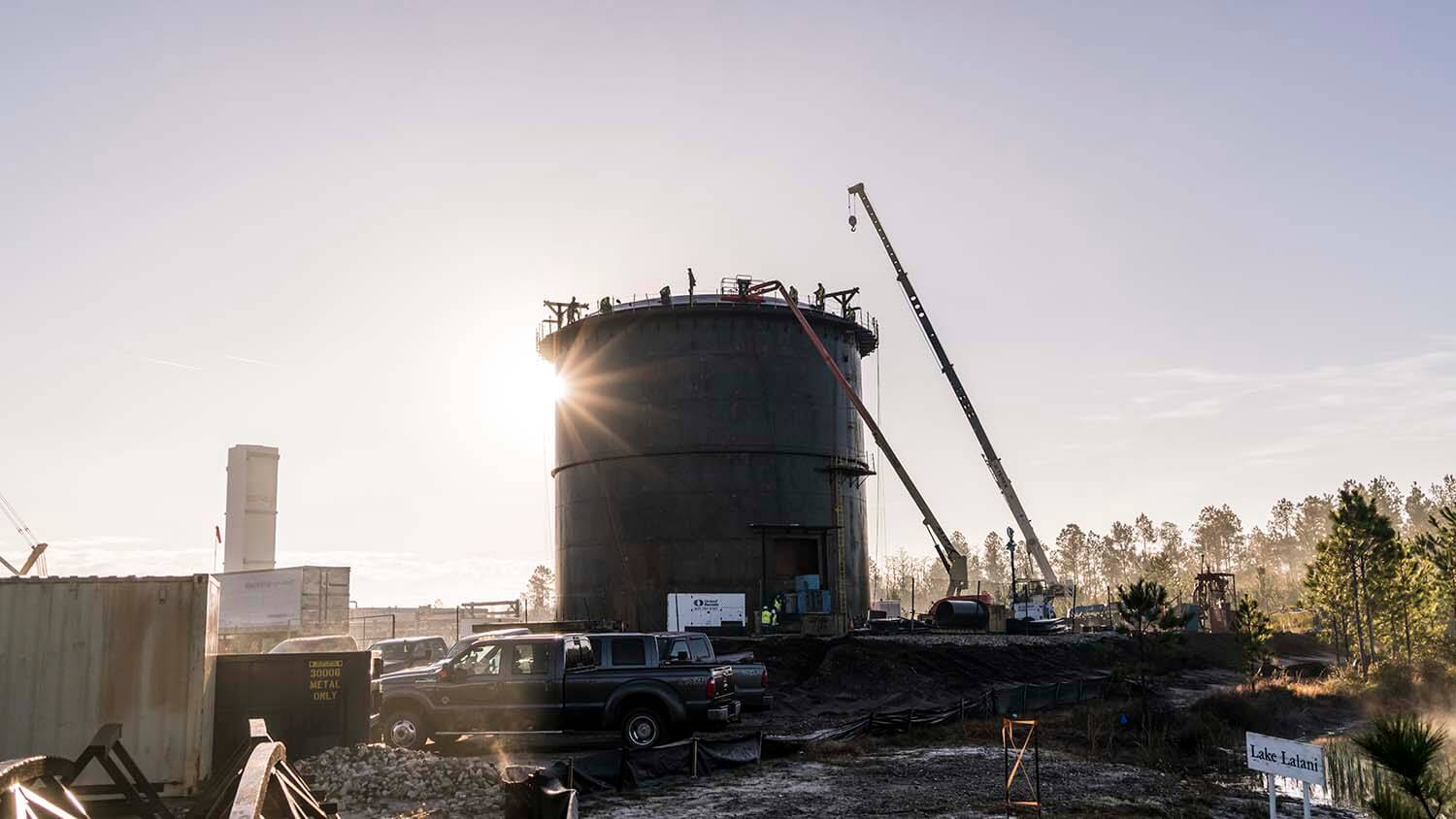Reduce Environmental Impact Through AST Design, Planning & Maintenance
From the outside, aboveground storage tanks (ASTs) may not seem particularly complex. However, if you are familiar with industrial infrastructure, you know that these storage facilities are actually complex feats of engineering. That’s because ASTs are typically designed to hold hazardous materials, like petroleum, fuel, chemicals or waste. ASTs are designed to protect the product inside and the area surrounding the tank. Some ASTs actually have two roofs: an inner floating roof designed to help prevent emissions and an outer geodesic dome to provide structural integrity. Strict industry standards, like API 653, guide storage tank design and maintenance.
At Matrix PDM, we believe that it is our duty to reduce environmental impact through engineering and design. In fact, we believe this stems from one of our core values: stewardship. Through proper planning and thoughtful design, we build aboveground storage tanks that will perform well over their lifespan and safeguard the environment. Next, we will explore three ways we can minimize risk and protect the environment through AST design, planning and maintenance.
Custom Design Can Reduce Environmental Impact
Custom design allows location to drive material and structural design choices. The design of the storage facility can take into account severe weather forces that are likely to impact the tank throughout its lifespan. These can include heavy winds, hurricanes, floods and earthquakes.
Regional weather patterns for “normal” weather conditions also need to be accounted for. Design loading refers to the environmental factors that will impact a surface, in this case, a tank roof. Engineers will take note of forces from snow loads and rain accumulation, particularly in the roof design. These accommodations help prevent leaks that could prove hazardous to the environment.
Identify, Classify & Migrate Tank Vulnerabilities
Terminal owners and operators should take a formal approach to classify assets and identify vulnerabilities. Each asset and its related components should be identified and assessed. For example, an external pontoon floating roof is critical and assigned a risk category of A. With this classification, the roof should be assessed and examined for vulnerabilities such as inadequate roof drains. This process can take place proactively in the design phase or on existing assets.
Nondestructive Examination Helps Reduce Environmental Impact
Nondestructive Examination (NDE) is key to AST maintenance programs. Aboveground storage tanks must be periodically inspected throughout their service life for signs of damage. The carbon steel is prone to corrosion and in some circumstances, cracks can form over long periods of time. Owners/ operators use visual, X-ray, ultrasonic and other inspection methods to search for service-induced damage. In fact, engineers in Idaho are currently exploring ways to use robots to aid with tank inspection. Robotic tools can be used to inspect hard to reach sidewalls and tank floors.
Matrix PDM: Aboveground Storage Experts
At Matrix, we have more than 90 years of experience designing aboveground storage tanks. We have the resources and expertise to design a tank that will reduce environmental impact throughout its lifespan. Contact us to learn more about our engineering and design services.
